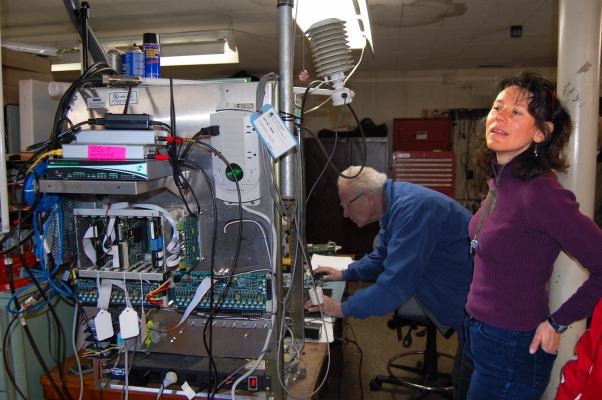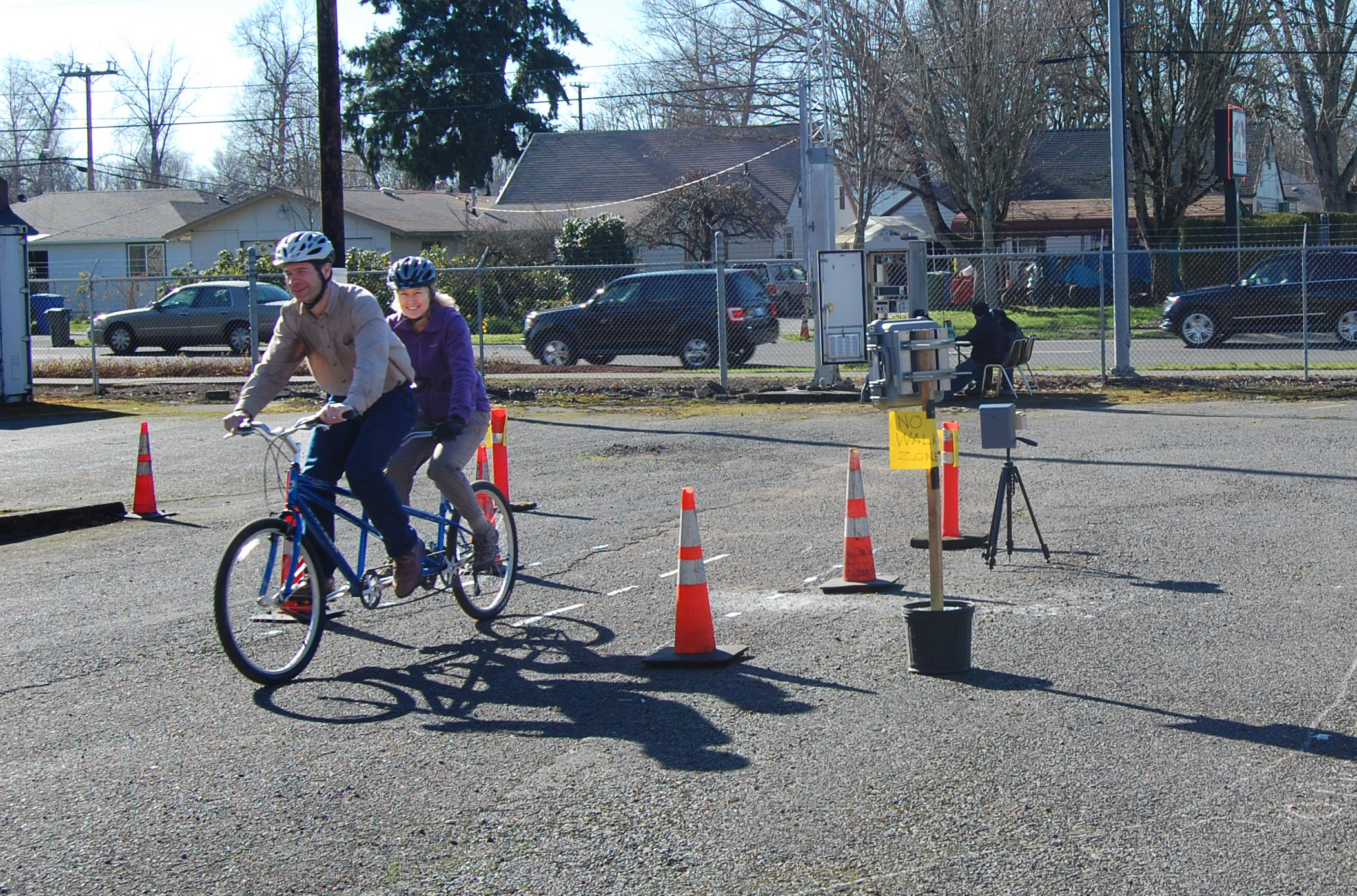TREC tests bicycle counting technology with Oregon DOT

On Monday, February 23, TREC and the Oregon Department of Transportation conducted controlled tests on various methods for counting cyclists.
Krista Nordback, a TREC research associate specializing in bicycle and pedestrian counting and safety, coordinated the event with ODOT staff in Salem, Oregon.
The testing was part of an ongoing study in which TREC and ODOT are partnering up to determine the most efficient and effective way for Oregon to collect non-motorized counts.
“Counting bicycles and pedestrians is something that ODOT wants to be doing,” Nordback said. “The purpose of this project is to find ways to do that using the equipment they already have or are planning to purchase anyway.”
A pilot project last year, headed by TREC researcher Miguel Figliozzi, tested the accuracy of data collection using signal infrastructure already in place. Researchers analyzed video footage of intersections and compared the number of active travelers with the numbers produced by the counters.
The inductive loops and tube counters in the pilot project failed to yield accurate bicycle counts, so part of Nordback’s study is an attempt to find out if there is a way ODOT could alter or reposition their standard bike detection loops to make bike counts better.
 The researchers performed testing cycles on different types and configurations of bicycle traffic, including cyclists riding two abreast, cyclists riding in close single file, tandem bikes and bicycles with trailer attachments.
The researchers performed testing cycles on different types and configurations of bicycle traffic, including cyclists riding two abreast, cyclists riding in close single file, tandem bikes and bicycles with trailer attachments.
The testing took place at ODOT’s Traffic System Services Unit in Salem, Oregon, where Nordback, research assistants and ODOT staff set up a multi-station course to evaluate three main counting methods: tubes, inductive loops and thermal imaging technology.
“ODOT wants to explore using thermal imaging cameras for signal detection,” Nordback said. Currently inductive loops and tubes are in widespread use throughout ODOT’s transportation system, but have drawbacks because their location in or on the road pavement makes them vulnerable to being torn up by snow plows and vehicles with heavy tires.
Video cameras, considered briefly as an option because of their position overhead and out of harm’s way, have the drawback of being useless in fog.
Thermal imaging cameras, however, work well for signal detection because they are able to detect heat signals from people and vehicles, even in foggy and rainy conditions.
ODOT also took advantage of the testing environment to evaluate microradar and simple infrared sensors.
Various equipment vendors came to help set up and conduct the testing. One vendor came from Florida and another from Maryland. For Nordback, the presence of representatives from across the country indicates a promising national interest in counting technology.
Each type of technology was set up at a designated point, with volunteers riding a circular course designed to pass through each station. Research assistants were positioned at every station, collecting manual counts to be compared with those collected by the machines.
 Postdoctoral research associate Sirisha Kothuri (right) verified counts at the tube counter, collecting tallies to be compared with the numbers reported by the computer.
Postdoctoral research associate Sirisha Kothuri (right) verified counts at the tube counter, collecting tallies to be compared with the numbers reported by the computer.
The data collected during the tests will supply rich material for analysis of how each type of technology handles each situation.
The next step is field testing, to be conducted later this year.
For more information about Nordback's bicycle counting research, visit the IBPI guide to bicycle & pedestrian count programs.
